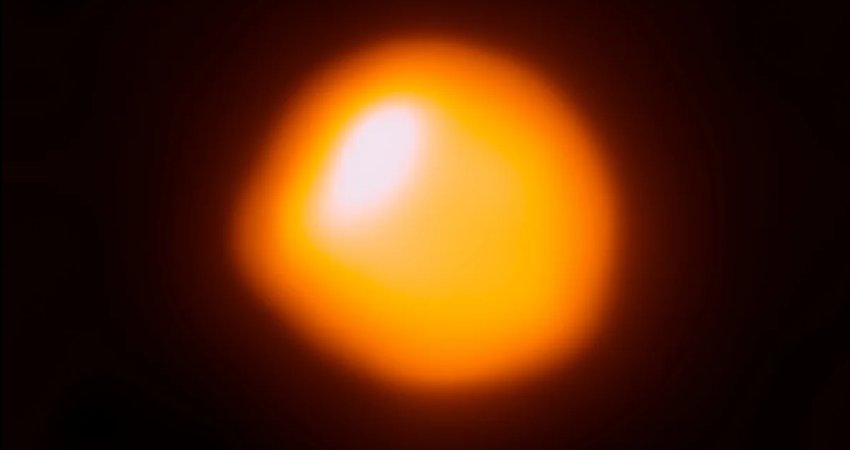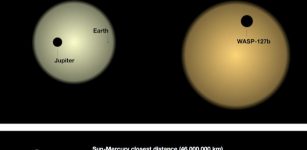Fascinating Gigantic Betelgeuse Star Is Smaller And Closer Than First Thought
Eddie Gonzales Jr. – MessageToEagle.com – Betelgeuse (also known as Alpha Orionis) is aging, red supergiant star located about 600 light-years from the Sun in the Constellation Orion that has long fascinated astronomers.
The star is so large that if it replaced the Sun at the center of our Solar System, its outer surface would extend past the orbit of Jupiter.
Lately, astronomers reported the unexpected dimming of the supergiant star and its behavior was very strange.
Now, an international team of astronomers led by Dr. Meridith Joyce from The Australian National University (ANU), informs that Betelgeuse has probably additionally 100,000 years until the gigantic star dies in a fiery explosion.
See also:
Stunning New Image Of Betelgeuse Captured By ESO’s VLT
Pulsating Supergiant Betelgeuse That Might Go Supernova
Uncovering Mystery Of Dimming Star Betelgeuse – A Dust Cloud May Be Responsible
“It’s normally one of the brightest stars in the sky, but we’ve observed two drops in the brightness of Betelgeuse since late 2019,” Dr. Joyce said.
“This prompted speculation it could be about to explode. But our study offers a different explanation.
“We know the first dimming event involved a dust cloud. We found the second smaller event was likely due to the pulsations of the star.”
The researchers were able to use hydrodynamic and seismic modeling to learn more about the physics driving these pulsations—and get a clearer idea of what phase of its life Betelgeuse is in. According to co-author Dr. Shing-Chi Leung from The University of Tokyo, the analysis “confirmed that pressure waves—essentially, sound waves—were the cause of Betelgeuse’s pulsation.”
“It’s burning helium in its core at the moment, which means it’s nowhere near exploding,” Dr. Joyce said.
“We could be looking at around 100,000 years before an explosion happens.”
“The actual physical size of Betelgeuse has been a bit of a mystery—earlier studies suggested it could be bigger than the orbit of Jupiter,” co-author Dr. László Molnár from the Konkoly Observatory in Budapest said.
In their study, the astronomers say Betelgeuse only extends out to two-thirds of that, with a radius 750 times the radius of the sun,” Dr. Molnár said.
“Once we had the physical size of the star, we were able to determine the distance from Earth. Our results show it’s a mere 530 light-years from us—25 percent closer than previously thought.”
The good news is Betelgeuse is still too far from Earth and the star’s future explosion cannot pose a threat to our planet.
“It’s still a really big deal when a supernova goes off. And this is our closest candidate. It gives us a rare opportunity to study what happens to stars like this before they explode,” Dr. Joyce said.
Written by Eddie Gonzales Jr. – MessageToEagle.com Staff











